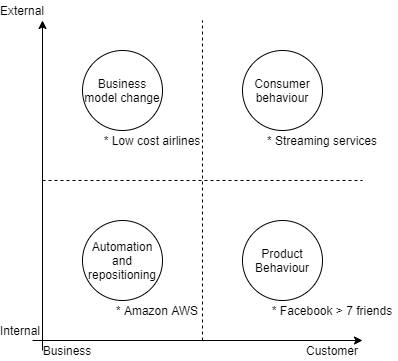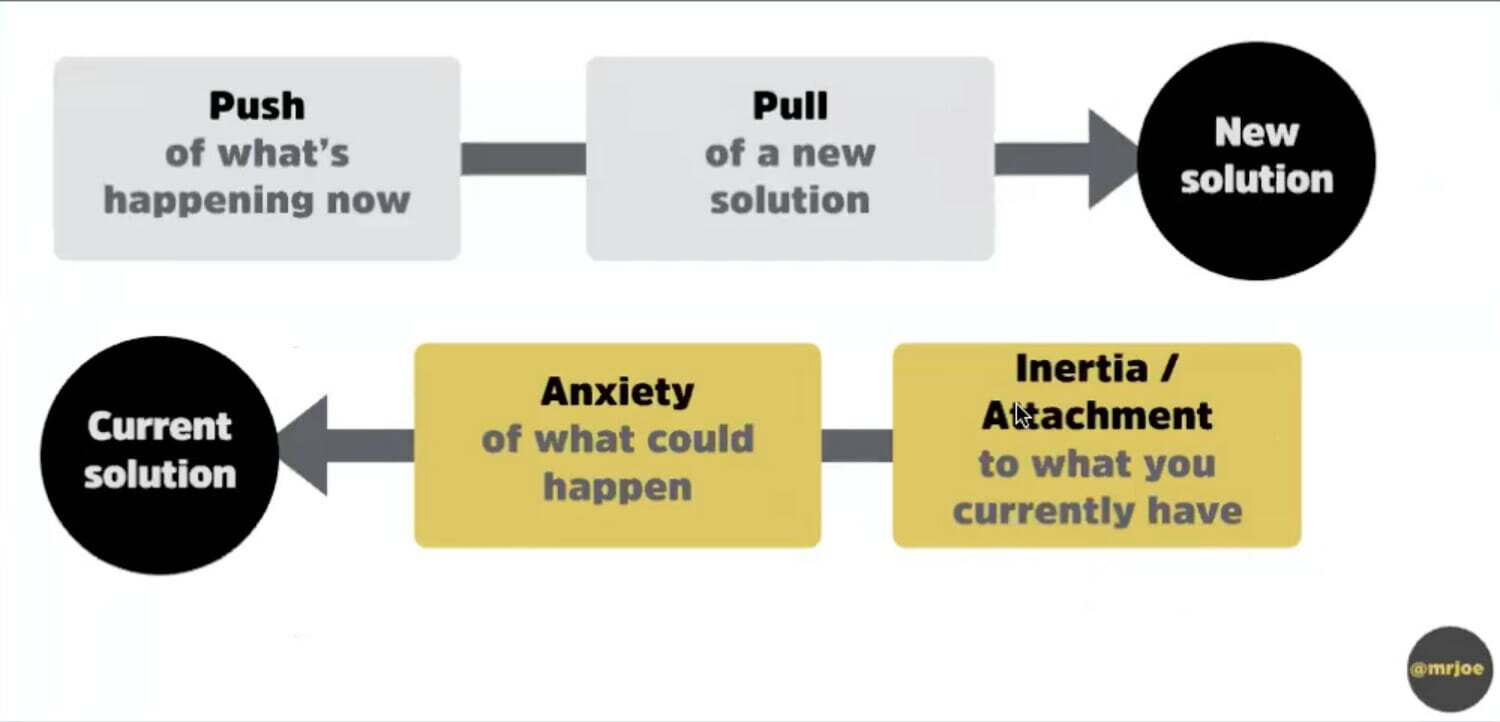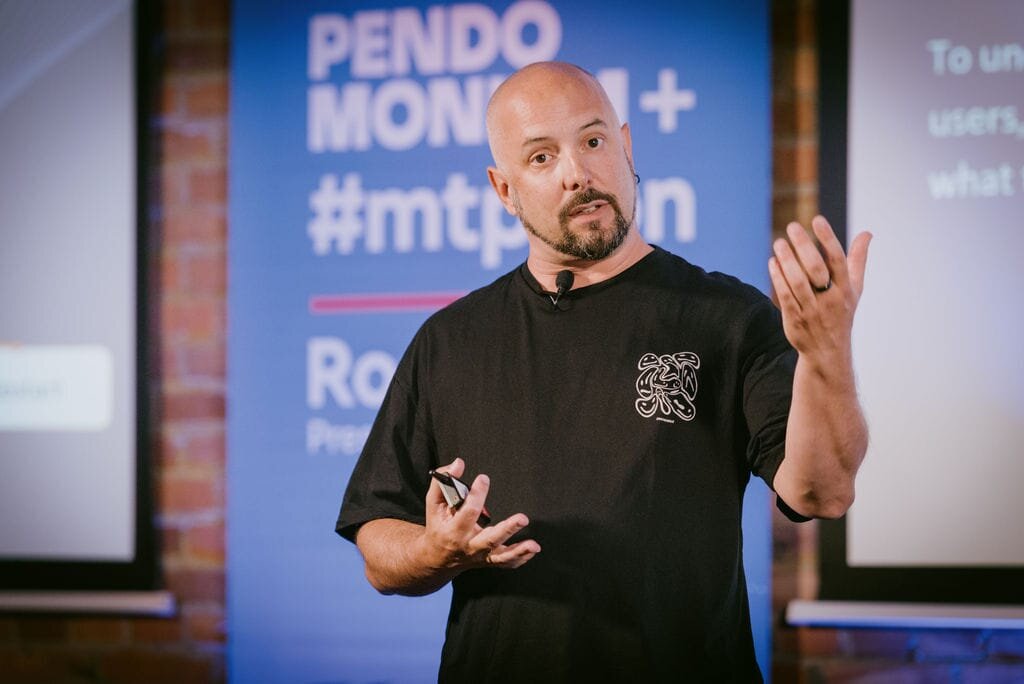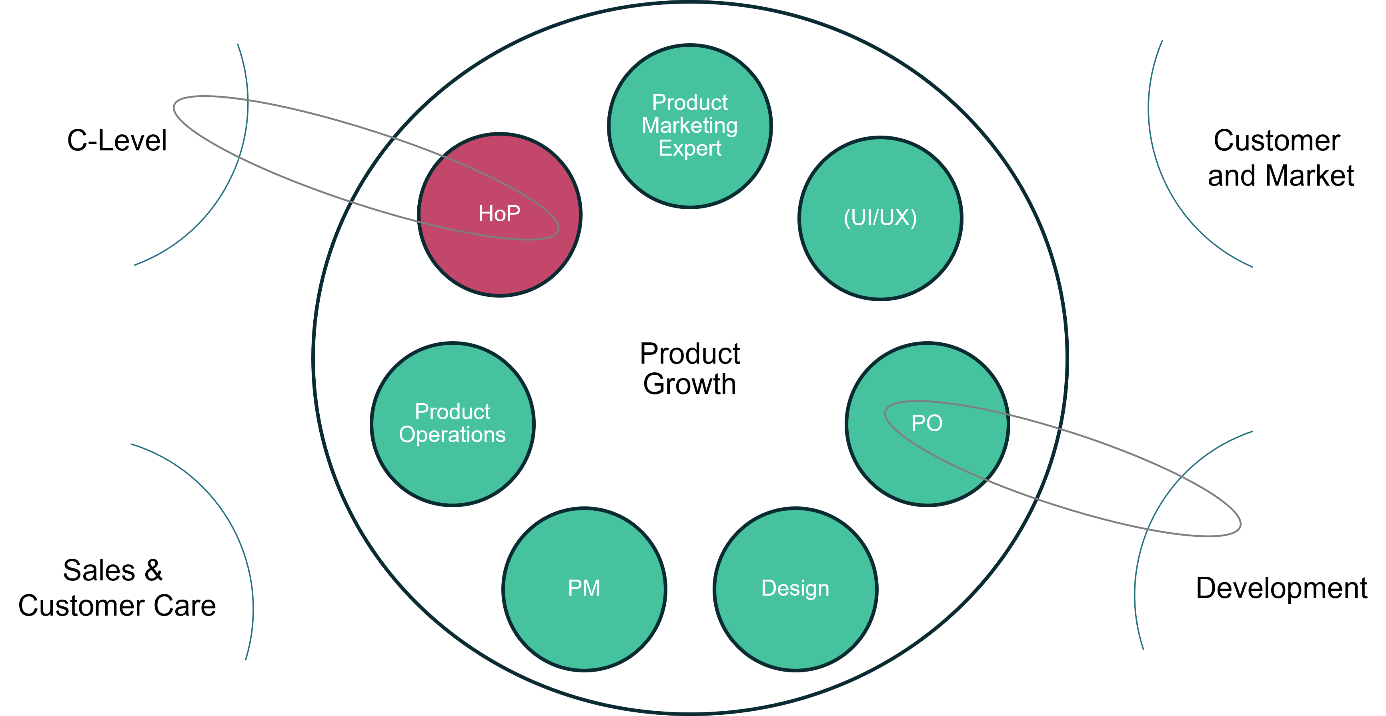Having the right insights is a critical component in creating a strategy. While this is very obvious and widely mentioned in every piece of strategy advice, the truth is that there are no resources that detail how to generate them. I'd like to change that by providing my experience of using a few ideation frameworks and methods that you may like to try.
Product strategy is a hard activity for most product teams and many companies struggle with a solid definition of the direction they want to take. The lack of strategic context makes squads choose different routes while executing, tackling various problems, and drastically reducing the impact they could achieve if they were better aligned.
A Quick Example of the Impact of Lack of Strategy
A long time ago, when smartphones were starting to explode in growth, I led the team in charge of the mobile experience for a travel company. We wanted to provide great value for our users, but our main goal was rapid growth, so we jumped in all directions chasing all the shiny objects we could find.
I remember making great efforts to work with manufacturers to pre-install our app (yes, that used to be a thing) and working with carriers for free roaming when traveling with us. None of them made a difference.
In the end, one of the primary sources of growth came from crafting a great experience, getting good reviews, and positioning higher in the store. If we had been focused on that from the beginning, we would have grown faster while making users happier.
What Exactly are These Insights?
In essence insights are learnings of the kind that we continuously search for during discovery. They are the identification of a problem, or a tendency, or an opportunity to radically change the game.

Why are They Important?
To select the right problems to solve and direct the product teams towards a meaningful solution, you need to start with useful insights. Crafting a solid strategy, without these learnings, is merely following a hunch.
Myths About Insights
We may think that an insight sounds like the sort of idea that only Steve Jobs would come up with. However, although being a genius would be fantastic, simple mortals like us still can leverage tools to come with great insights.
Allow me to debunk a few myths on how insights are generated:
- Myth 1: Insights come from inspirational moments, like taking a shower or sitting under an apple tree. We can use processes and tools to identify the right ones for our products.
- Myth 2: You will have a meeting to define the strategy and insights would magically materialize. With the right discovery and analysis processes, the identification of opportunities should be continuous. It would be naive to expect that great ideas will spark from a one-hour meeting of executives.
- Myth 3: There is someone responsible for coming up with the insights. Whether you think this person is the CEO, the CPO, or the product manager, that would be shortsighted. Good ideas can come from any source, but especially from product teams doing discovery work. Any team member should bring options to the table.
- Myth 4: Insights come from intuition. I value intuition, and certainly someone experienced in a particular industry would probably be prone to finding trends and opportunities faster. But there are two big caveats: 1) Sometimes a higher knowledge gives us extra confidence in our ideas without having enough supporting evidence and falling into confirmation bias. 2) Innovation requires doing things differently. Often, the more used we are to how things are done, the more resistance we have to even think about new ways.
In summary, there is no suitable replacement for a robust and informed diagnosis.
The Insights Matrix
Another assumption is that strategic insights are based on a realization of where the market is moving and anticipating future customer behavior. While it is true that there are incredibly successful stories of this type of innovation, there also are other types to consider that can be equally valuable.
To provide a framework to classify the different possible insights, we can divide our analysis into two axes, ending up with the following matrix:
- The Internal versus External axis divides the insights by the source of information.
- External may be related to facts detected in third-party sources.
- Internal focuses on what we found in data generated in our company.
- The Business centered versus Customer-centered axis differentiates between changes in our business model or customer behavior.
Let's now explore the four resulting quadrants:
- Internal-Business insight: The learning will be related to information about how the company is using a particular resource and the impact it has. For example, we may have seen a critical business process that requires several people to execute manual operations, and it takes many days for users to see results. The automation opportunity may have significant cost savings and improve speed and consistency to provide a better experience to customers.
- Another interesting example in this category is the repositioning of an internal capability to create a new business. Consider the opposite case, when internal information tells us that we are doing something far better than the market. Amazon Web Services is an example of this type of insight. The company had developed an internal capability to provision infrastructure resources for internal teams quickly, and it had unused infrastructure resources. By repositioning the use of these tools, they created one of the most significant sources of revenue for the company.
- Internal-Customer insight: in this case, we identify possibilities related to the customer's behavior with our product. An excellent example of such a discovery is in the initial days of Facebook. The team detected that users who reached seven friends in the first few days had a churn rate significantly lower than those who hadn't. Armed with this insight, Facebook considerably modified the experience of the initial days in the platform to help users add those friends, skyrocketing retention and growth.
- External-Business insight: external tendencies are not only related to changes in user behavior. Sometimes there is a change in an industry's ecosystem, or a radical change in a part of the supply change, or something that triggers the opportunity to create a new business model. Consider low-cost airlines. Customers want to travel from point A to point B, and the most valued aspects usually are price and punctuality. By reducing non-required features of the service, budget airlines reinvented the business model, offering customers a lower fare while preserving the most valued aspects of the experience.
- External-Customer insight: the most notorious examples came from companies that caught a trend of new behavior. In the digital world, many times, those changes are also related to a technological change that enabled it. For example, the trends in streaming services became available by the improvement of internet bandwidth.
Sources of Innovation
Another framework for insights is to consider sources of innovation. In the book Innovation and Entrepreneurship, Peter Drucker defined seven different categories.
Inside sources:
- The Unexpected: what has been a surprise success or failure? Is the result of a new opportunity emerging?
- Incongruities: what are the pains customers still have with the current solution?
- Process Needs: what company processes can be improved?
- Shifts In Industry and Market Structure: disruptions or trends in the ecosystem.
Outside sources:
- Demographic Changes: are our customers changing, or is there a variation in the segment's size?
- Changes In Perception: are people perceiving our field differently? How can we leverage that change?
- New Knowledge: breakthroughs in technological, science, or other fields that can be implemented in our business.
A less well-known work in a similar space is the book 10 Types of Innovation by Larry Keeley and others. It describes 10 kinds of options grouped between these three groups:
- The Configuration of the business model and operation.
- The Offering, the value the product provides.
- The Experience the customer receives from the company.
Conclusion
Insights are not mythical ideas from the mind of a genius, nor are they mega new trends that we need to catch or die. They are challenging to find and are critical to a good strategy. But discovering them is not black magic. Thinking with frameworks will help you to organize your ideas, and you can also leverage these four tools to generate more insights.
Setting the right discovery and analysis practices, combined with the right strategic tools, should help any team to identify insights and then leverage them.
If you are interested, I'm writing a book that describes tools and techniques to go through the creation of a product strategy, a strategic roadmap, and OKRs, and how to navigate the links between them. Check it out here, or leave a comment below and I'll send you the section containing the "strategic insights" chapter.








